Deliciously rich and deeply satisfying – Beef Short Rib Soup (Galbitang 갈비탕) was my most favorite soup as a kid.

My memories of Galbitang
Because we were a family of 7 and beef was really expensive then (it still is today in Korea), it was an especially happy day when there was beef short rib soup for dinner. When we have Galbitang or beef short rib soup, it was probably because it was someone’s birthday or it was because we received the beef short ribs as a gift for Chuseok or New Year’s.
Since Korean Beef Short Rib Soup must be cooked for several hours, the whole house will eventually be filled with the wonderful and mouthwatering aroma of beef soup. I still remember how it made me so excited all day – although I did not really show it that much ’cause I’m an introvert… Anyway, wow.. it’s making me hungry even now just thinking about it. Guess it was my destiny to write about food…haha.. Btw, Check out my Instant Pot Gabitang recipe if you want to make it quicker.
So I loved this beef short rib soup as a child because it was just simply delicious. But, as a mom who has to cook dinner almost everyday, I love it because I don’t need to cook a lot of side dishes. If you have good Cabbage (Baechu) Kimchi or Kkakdugi or Seokbakji or Chong Gak Kimchi and some rice, that’s really all you need to make a warm and comforting meal. Some sautéed dried anchovies (myeolchi bokkeum) or sauteed dried shrimp (maleun saewoo bokkeum) will be a great addition if you are feeling extra generous and want to have something more than kimchi.
Up until about the age of 6 or 7, my mom washed Baechu Kimchi or Kkakdugi in water for me to make it less spicy. Once you wash away the seasoning, it is much less spicy but still very flavorful. This is how Koreans all get their kids used (and addicted 🙂 ) to Kimchi from young age. That’s also how I fed Kimchi to my daughter. From about when she was 3 years old, I washed cabbage kimchi pieces in water, cut them into smaller pieces with my chopsticks. And you can do that with radish kimchi too. I usually fed kimchi to her along with usually some rice in cabbage doenjang guk or miyeok guk. She needed extra fiber in her diet and so this was a great way to add it. Of course, as a Korean mom, I also wanted her to like Kimchi so we could enjoy it together as a family. So did I succeed?? Yes, I did. 🙂
Add onion skins to the short rib soup
Onion skin is known to have even more antioxidants than the onion itself and Koreans use it in their soups because it removes any gamey smell from a meat soup. “ It’s also rich in quercetin – a flavonol that can reduce blood pressure and prevent arterial plaque that can cause stroke” In addition, the skins are rich in fiber; diets high in fiber help to reduce heart disease, digestive problems, some types of cancer and type 2 diabetes. According to Science Daily (based on the journal, Plant Foods for Higher Nutrition), the phenolic compounds in onions help to prevent coronary disease and have anti-carcinogenic properties. (from Raising Natural Kids blog).
*More discussions about using organic vs conventional onions and onion skins at the end of the post.
Adding green onion roots (Allii Fistulosi Bulbus or Cong Bai)
Green onion or scallion roots ( 파뿌리 Pappuri) and the white stem part were long known in Korean and Chinese herbal medicine to help with early-stage common cold and nasal congestion. So I heard that in the past Korean moms made Pappuri tea for their kids with colds.
But what I did not know what that it also makes a beef or anchovy broth taste better! I first learned this from my mother-in-law and also from a cooking class while I was in Korea. If your organic green onions come with roots, save the roots, wash them well and dry them for later use. In Korea, they even sell it separately at the market. Since I grew my own green onions last summer, I saved all the scallion roots by drying them.
How to make Galbitang
Servings: 6 Prep Time: 1 hr Cooking Time: 1 hour 45 min Difficulty: Easy
Ingredients
- 1.5 lb (700 g) beef short ribs (boneless if OK too)
- 10 Cup water
- 1 yellow onion with skin on if possible (if it’s organic)
- 4 green onions or 2 daepa (대파)
- 2 green onions or 1 daepa for soup stock
- 2 green onions or 1 daepa, sliced for garnish
- 2 thick slices of ginger
- 3-4 dried or fresh green onion roots (optional)
- 1/2 medium size radish, cut into 1/2 in thin quarter slices
- 2 T chopped garlic
- 1 T guk ganjang (soy sauce for soup)
- 1 1/2 tsp sea salt
Step-by-Step Instructions
- Cut ribs into individual pieces if they are not cut already. If not, cut between each rib bone so you have single short rib pieces like below. Also, trim off excess fat since short ribs have a lot of fat.
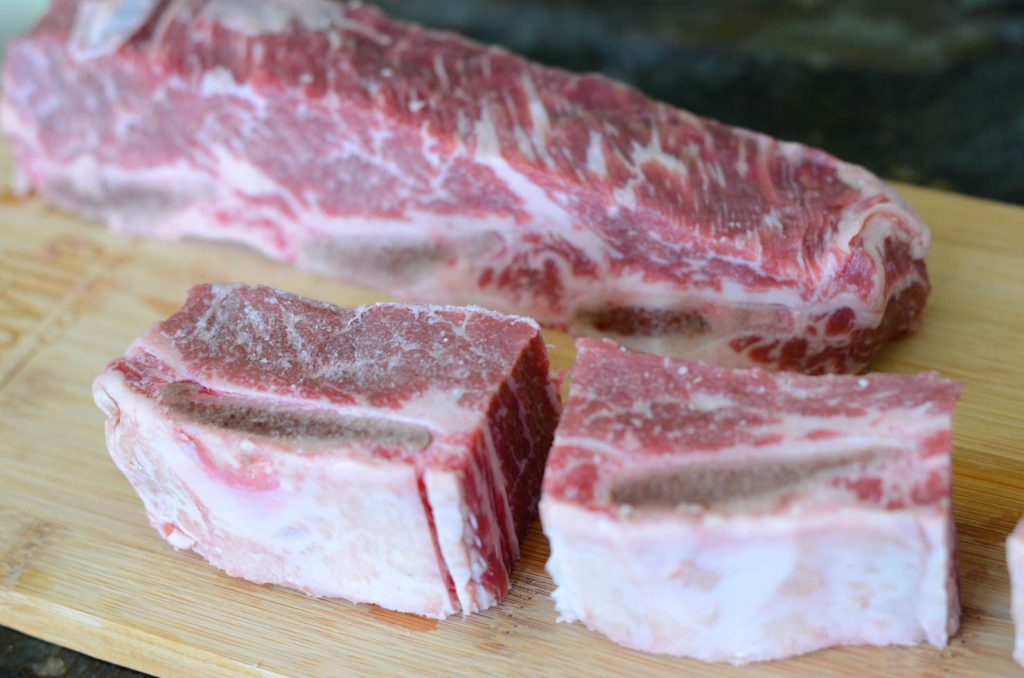
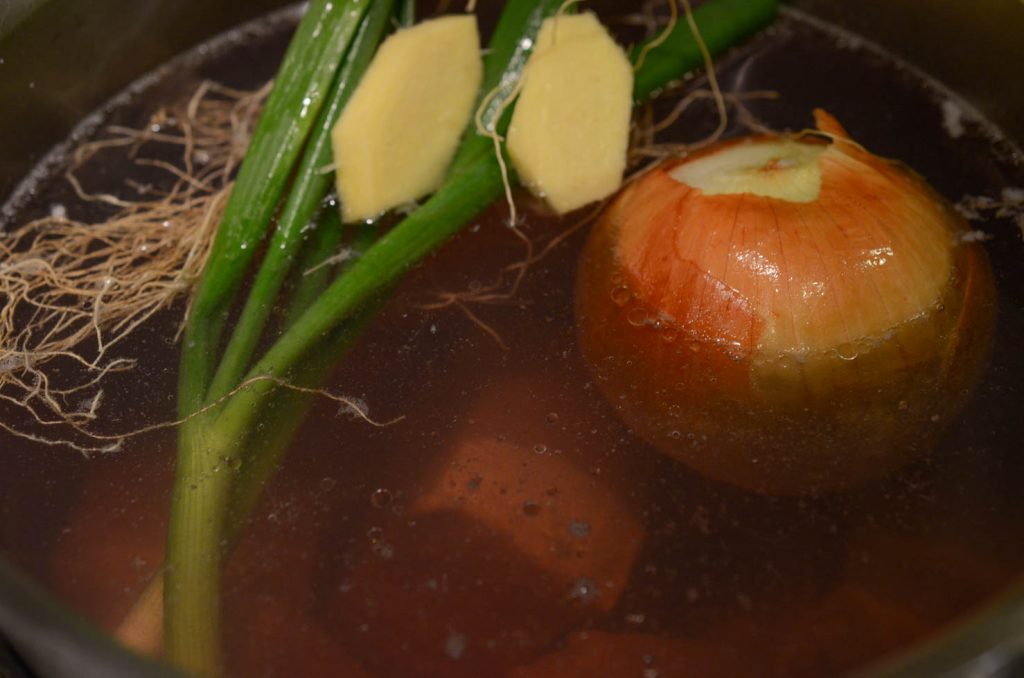
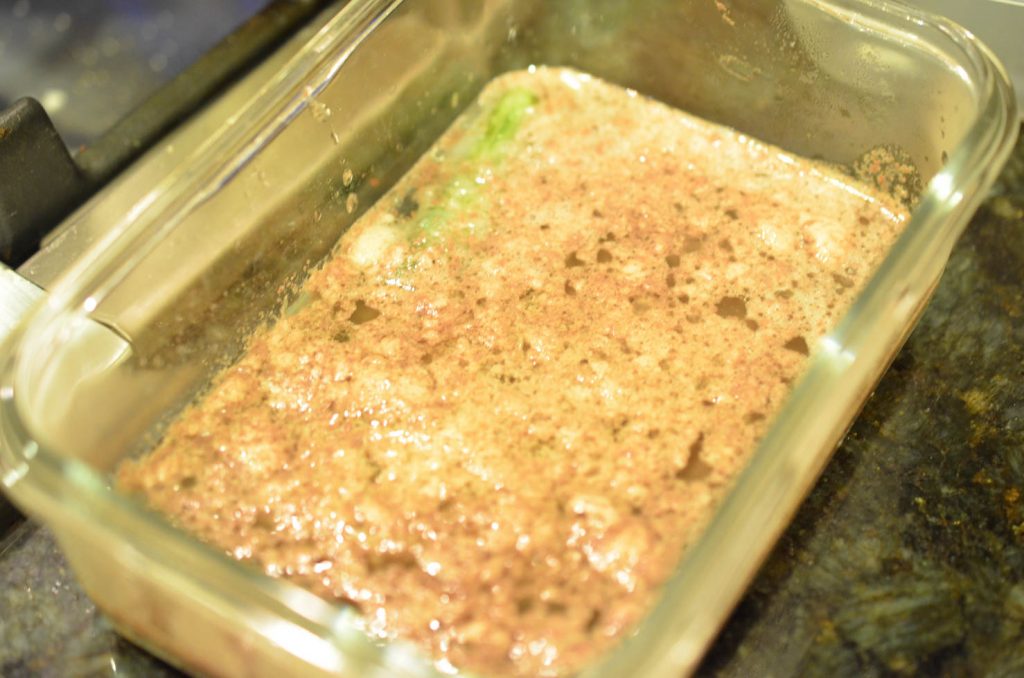
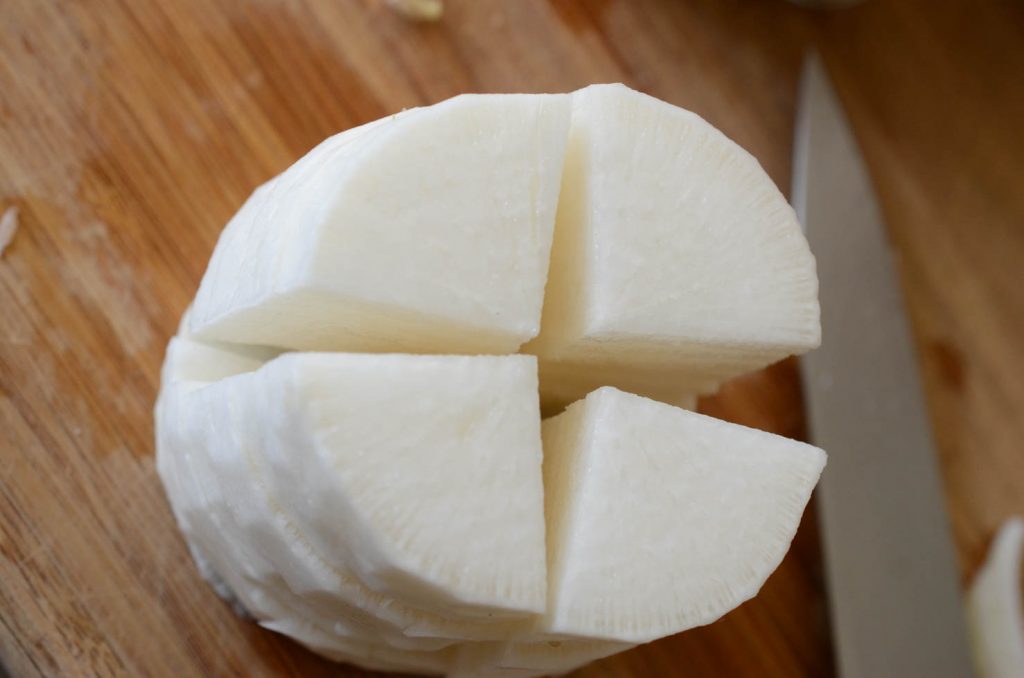
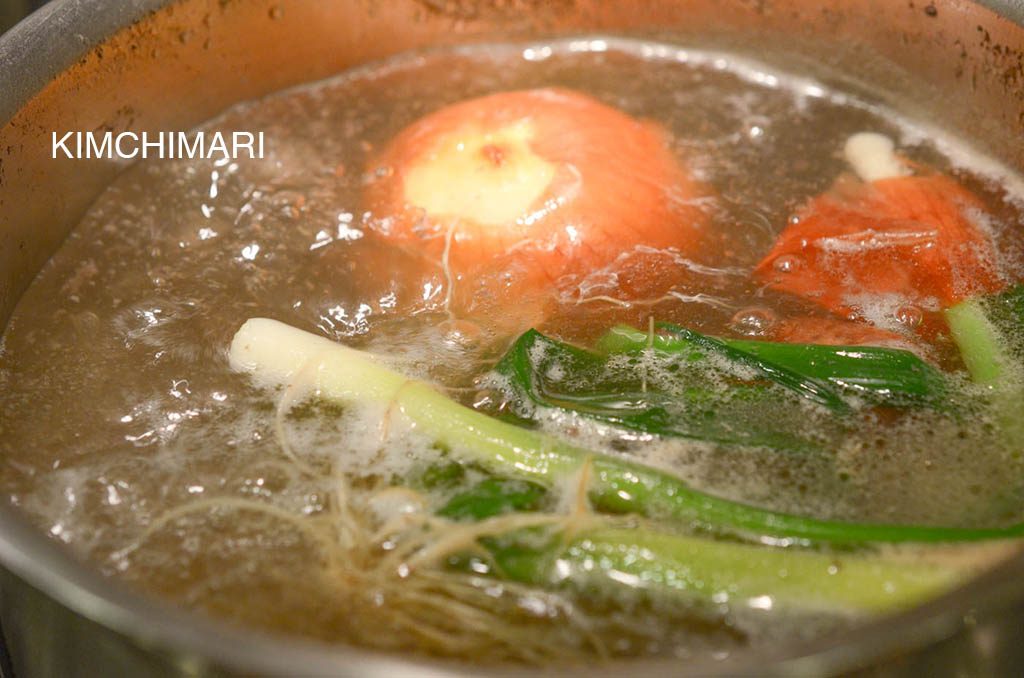
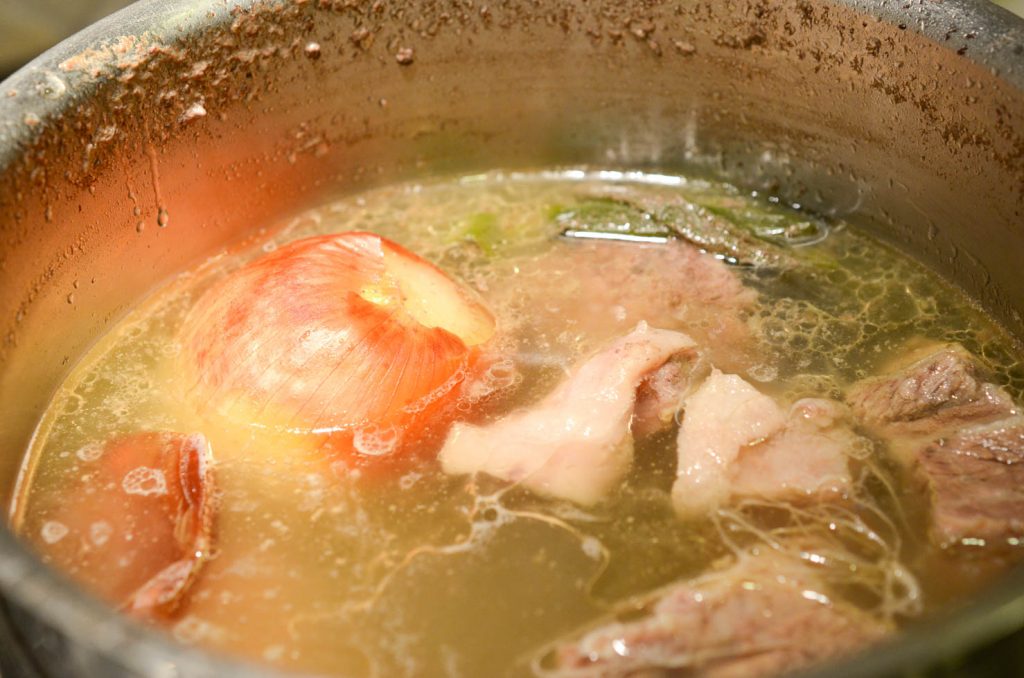
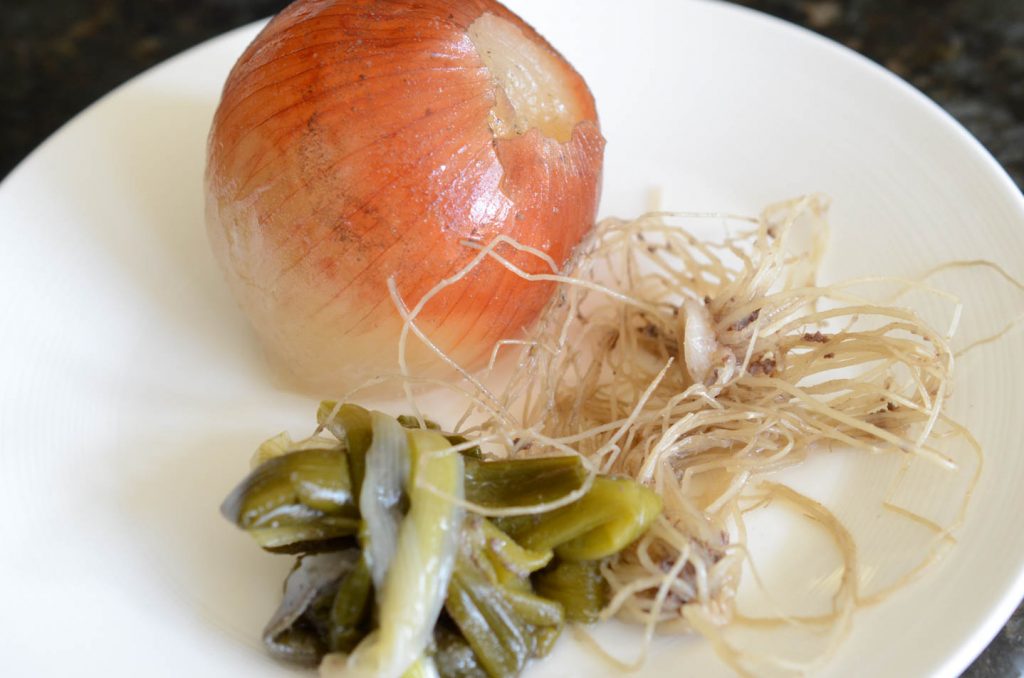
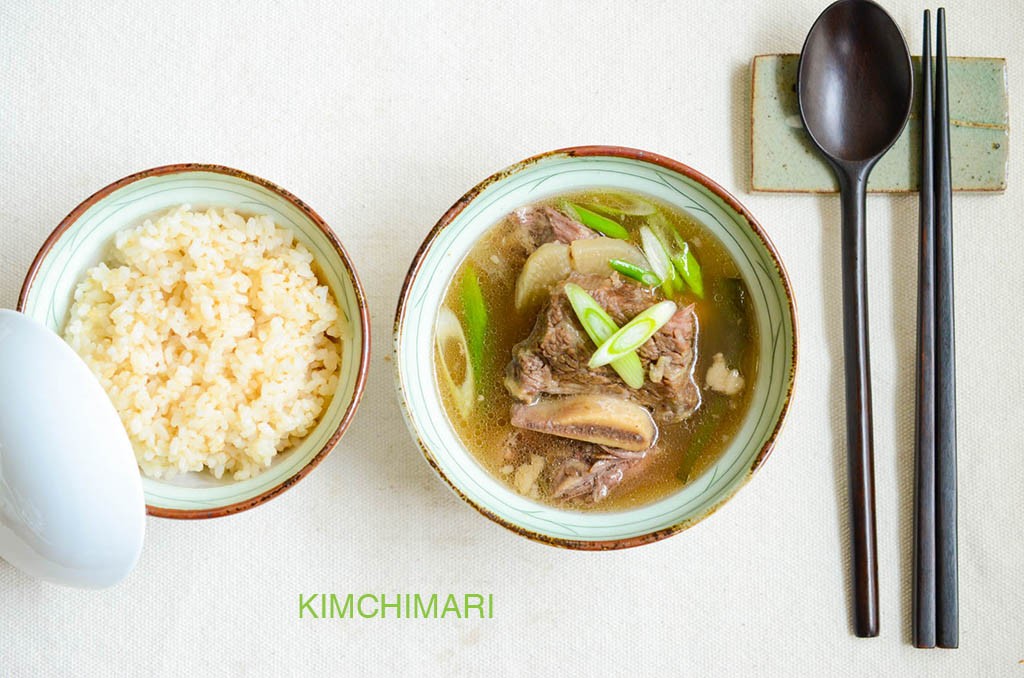
Tips
- This is a lot of soup so freeze in serving size portions for later.
- Skim off more fat by cooling the soup and letting the fat harden on top. See Galbijjim post.
- I forgot to include in the picture but serve some soy sauce (regular) for dipping the rib meat in. So good this way.
- If you don’t have guk kanjang, you can just season it with salt all the way.
Organic vs conventional onions – which should I buy? and should I buy organic if using the onion skin?
According to USDA data, onions are one of CLEAN vegetables that have very little pesticide residue even when grown using conventional methods.(Thank you to Judith for this info) However, it is not clear to me that this test was done also for the onion skin. In the video embedded in the article by ConsumerReports, they talk about how oranges pesticide residue is tested AFTER the orange rind is removed. And thus, even though orange is a CLEAN fruit, they do recommend that if you are going to eat the rind, you should buy organic. And so my thinking is that the same would apply for onions. I think it would be safer to buy organic if you are going to use the skin. But I could not find any scientific evidence online both in Korean and in English that supports my thinking so it is totally my personal opinion at this point.
Short Rib Soup – Galbitang
Ingredients
- 1.5 lb beef short ribs
- 10 cup water
- 1 yellow onion with skin on (if it’s organic)
- 2 green onions or 1 korean leek (대파) for stock
- 2 green onions or 1 korean leek (대파), sliced for garnish
- 2 thick slices of ginger
- 3-4 dried or fresh green onion roots (optional)
- 1/2 medium size radish , cut into quarter thin slices
- 2 Tbsp chopped garlic or 5-6 whole cloves
- 1 Tbsp guk ganjang (soy sauce for soup)
- 1 1/2 tsp Sea Salt (Trader Joe’s)
Instructions
- Soak short ribs in cold water to draw out blood from the meat. Soak for 1 hour. *If you don’t want to wait, you can flash boil it, discard the liquid and boil again with fresh water added.
- Prepare one whole yellow onion with skin on.
- Prepare cut ginger, chopped garlic, 2 whole green onions and green onion roots(optional).
- Add ribs, ginger, green onions, onion and green onion roots and 10 cups of water in a large stock pot and bring to boil on medium high heat.
- Once it starts to boil, lower heat to medium, skim off any brownish foam that accumulates on top. This is necessary if you want a clear soup. It also helps you skim off fat. Here’s how much I ended up with after 3 or 4 times of removing foam from the soup.
- SIMMER FOR 1 HOUR uncovered by lowering heat to medium low.
- After simmering for 1 hour, add radish slices.
- SIMMER for 20 MINUTES with radish added.
- Discard all aromatics – everything except radish.
- Season soup with guk ganjang, sea salt and chopped garlic. Simmer for 10 more minutes.
- Serve soup with some freshly sliced green onions, black pepper. With a bowl of rice.
Tips & Notes:
Nutrition Information:
Hope you enjoyed my recipe post!
take care,
JinJoo

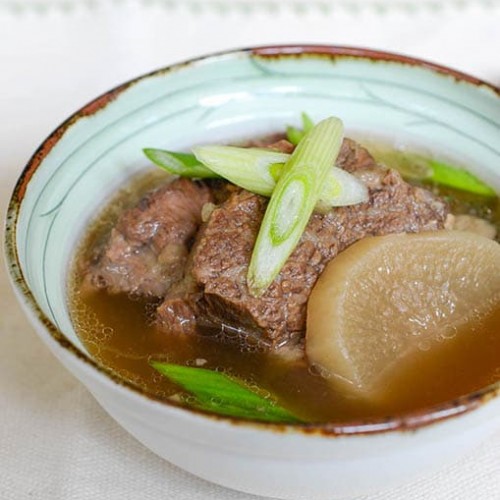
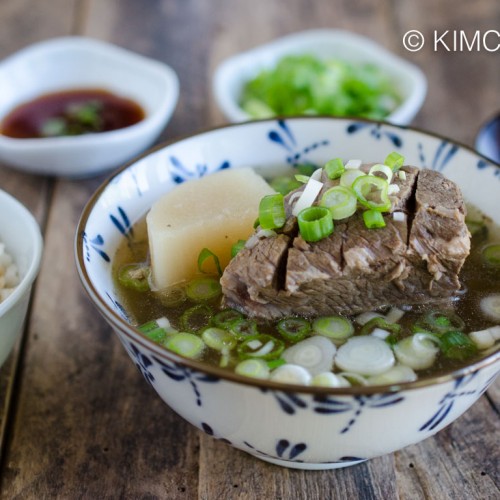
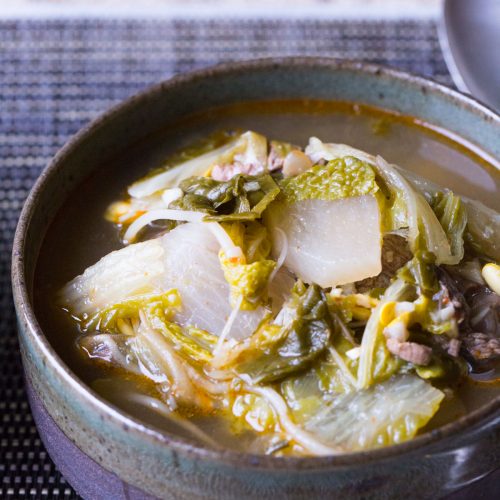
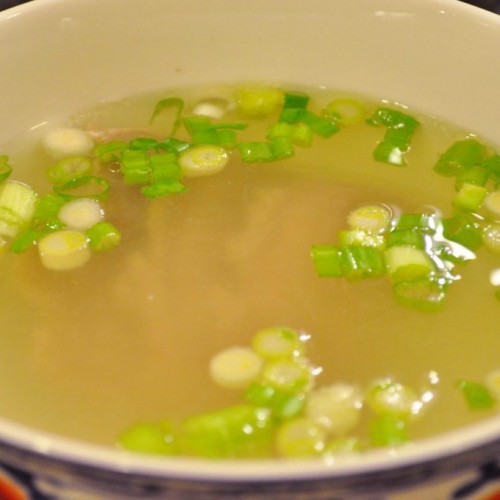
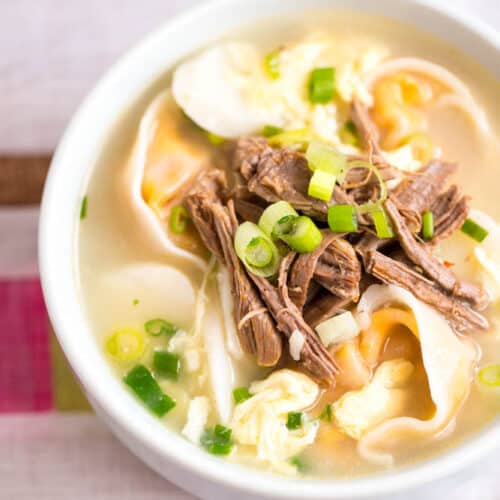
















Hello,
All the guk ganjang that I have seen has wheat (gluten), is the one you use gluten free? If so, which one?
Thank you!
Yes, the one I have is gluten free – It’s Sempio.
Hello, would the same cooking instructions apply to boneless short ribs as well? Thank you
No it will be less. You should check after 35-40 min. Good luck.
Thank you so much for taking the time to reply. I’m scared my Galbitang will not turn out as well since I don’t have the bone, I really hope it comes out well by just changing the cooking time. Thank you!
Well – honestly, if you don’t have the bones it just won’t be the same as Galbitang. It will be more like just Gogiguk (regular beef soup) but should be still yummy.
JinJoo, this is in regards to your thoughts on the contaminates found on the skin of fruits and vegetables.
Oranges, apples, grapes and many more fruits are grown above ground in open air, so they are sprayed directly with various sprays which can penetrate and be absorbed by the skins. Root vegetables are grown primarily under ground where the dirt protects them from direct contact with sprays, allowing them to absorb much less contaminates. Onions are one of these, however, green onions tops are above ground and should always be washed thoroughly to remove as much contaminates as possible.
Hi Jean! Yes, that is what I read from most sources. Thank you SO much for the clarification and thanks for your comment!
I love the care that you are putting into this recipe and what i sense to be your entire approach. It feels very real, down to your detailed approach to recommending and researching the use of organic veggies. Yum, yum yum!!
Wow, your comments are very much appreciated! I often wonder if all the time I spend on one post is too much – sometimes it seems like all other Korean food blogs have so many posts and I just can’t seem to work fast enough to catch up… But your comment has reaffirmed my approach. Thank you again!!
Quality over quantity! You know that the people who comment here appreciate the depth to which you go in your recipes. And, eventually, I will forgive you for writing this entry 2 days after I made the same dish using a (cough, cough) different recipe. Well, maybe next month…
Hi Judith!! Oh no… so sorry, my post came 2 days late. I just can’t seem to keep up with your speed of cooking things.. haha..Thank you always my friend, for your kind encouragements. :))